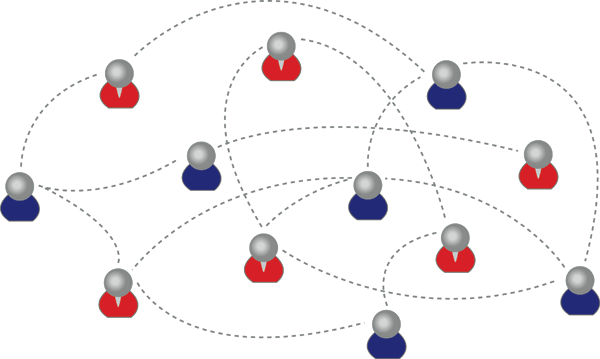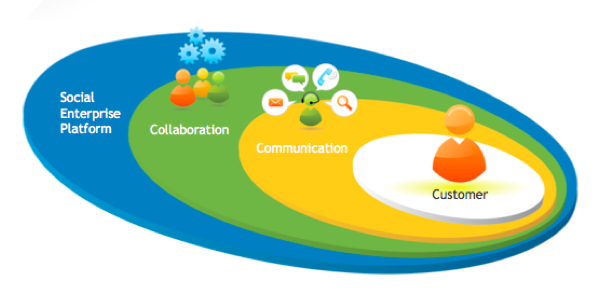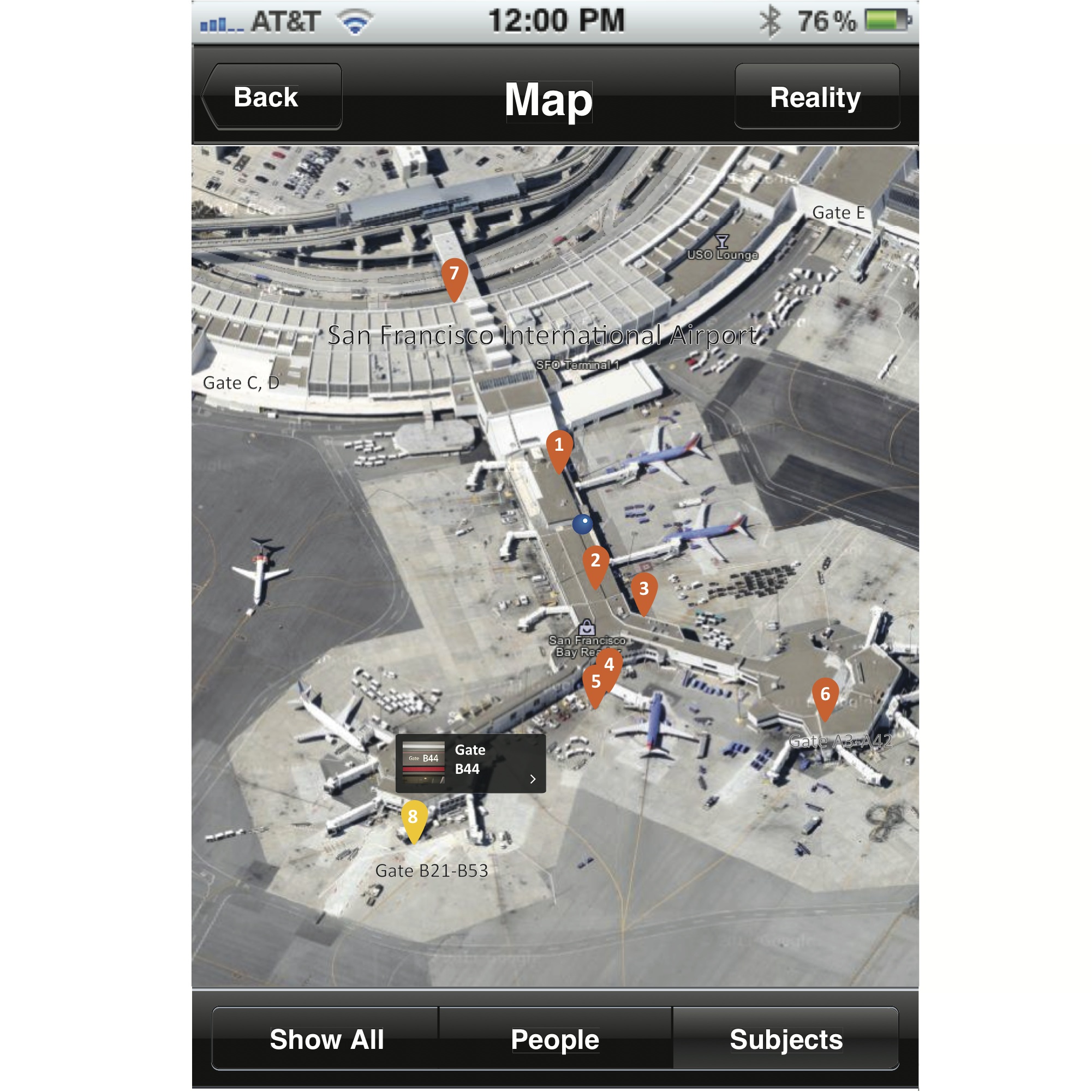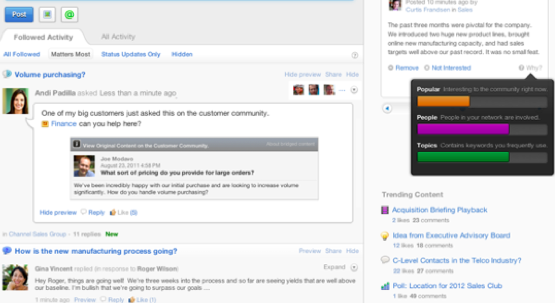
Enterprise communication software is in the thick of its heyday at the moment. From Atlassian snapping up HipChat to increase the communication offerings of its software a few weeks ago to Yammer’s continued push to be the name in enterprise software by grabbing a whopping $85 million in a Series E round of funding (bringing the company’s total funding to $142 million), there is a lot to buzz about.
While it seems to be an easy sell to venture capitalists and Fortune 500 companies, I was really curious just why now was the time that companies wanted to layer in more levels of social interaction and communication on top of all the other desktops and software services their employees already have to communicate on.
The new company Intranet
While many large businesses have had a long history with creating Intranet systems so that communication, documents and other elements could move securely within the company, it always was a challenging task that involved a fair amount of training and updating.
As enterprise software started moving into businesses to help communication, it became clear that it could really work like a more attractive and simple Intranet for businesses of any size.
Whether you wanted to share sales figures or explain the newest product offerings, employees could turn to one place and find answers to their questions while interacting with others within the company umbrella.
I caught up with the President of Social Computing over at TIBCO, the parent company of Tibbr, to discuss how its parent company Tibco built its own enterprise communication software to double as an Intranet service.
“The average person in the company makes multiple telephone calls, accesses different software systems and oversees multiple physical and virtual files,” Ram Menon told me. “So if you want a social switch then you have to reshape the workflow to make that happen by piping all the information onto a person’s wall.”
And one of the great aspects of building this social network is that you can layer in the security so that as few or as many people within the company have access to pieces of information.
Tibbr, alone, has close to a million users on its system (since being founded last year) and more companies each day are looking to integrate better communication and sharing tools into their businesses.
Social networks raised expectations
But more than just being able to have a single place for people to access and share company documents, employees have become so familiar with the process of using social networks that it seems only natural to mimic the process in a business environment.
“Employees were so frustrated that their work couldn’t even make collaborating on files as easy as every networking website they were on,” Menon said. “Now that we have the technology to make work collaboration or exchange as easy as posting a picture on someone’s wall, it takes some of that burden off of their plates.”
As technology and tech user processes evolve, the business environment will be adapting to make the working process much like a preferred consumer experience – fast and simple.
Another company, Moxie Software recently announced was adding a new enterprise communication system to help break down the walls that separate different departments.

The new service, called Spaces, is a customer-centric enterprise social software suite that brings customer communications into the employee collaboration applications.
So the next time you have a question to ask an enterprise you interact with, you just might get better responses faster since it will be directed to the best person and most available person to deal with your query specifically (rather than get bounced around, lost and lay unanswered in a junk-mail box).
Moxie already works on more than 270 million social enterprise interactions each month, between phone calls, online chats, customer emails and social networking communications.
The world of enterprise software to aid in communication has been big business lately, from the continued funding going to Yammer to the recent IPO of Jive Software, but the trick has to been to provide a comprehensive and adaptable solution that any business would want to fold into their existing enterprise entities.
Moxie believes that it has created that software that is highly customizable and easy to use with already existing programs so that it requires almost no training to get running.
When I caught up with Nikhil Govindaraj, the vice president of products with Moxie, he explained just how easy it is to bring Moxie Spaces into any business looking for better communication tools.
“We know how hard it is for big enterprises to effectively talk with all the members of the company and the clients on so many platforms so we have created a software that is easy to expand out to each business need,” said Govindaraj.
Founded in 2007, with at least $10 million in VC funding, Moxie wants to keep its core values firmly in creating an easy way to crowd-source and deploy solutions that area tailored for each business.
Many B2C services already use Moxie solutions including ING, Nutrisystem, AOL, Skype, Dell, Toyota and eBay, and Moxie hopes that Space will not only help these companies but also entice more companies to try some or all of the new elements they have created.
Geo-location and gamification
Just as social networks are incorporating more elements just as geo-location and gamification to their services, businesses are seeking to use similar tools in order to engage their employees with familiar processes.
The newest version of the Tibbr’s social communications app includes geo-location capabilities which integrates the ‘check-in’ model in the enterprise.

The service is looking to make communication about physical places insightful and easy to identify – such as discussion about an airport and changes that could occur at a given gate or terminal that employees need to know.
And, while Tibbr looks at the power of geo-additons, social enterprise business Jive Software is looking to utilize gamification elements and a whole social intranet.
Jive’s Facebook-esque offerings for the enterprises, launched a package of new applications that help businesses collaborate on a variety of tasks, including holding discussions, communication, sharing documents, blogging, running polls, social networking features and more.

While it sounds outdated, Jive says that many businesses rely on traditional, stale intranets for company-wide communication and team collaboration. Jive is hoping to disrupt this space by offering a more social intranet platform that includes gamification will provide a greater advantage against others in the field such as Yammer.
The new applications allow managers to create and implement missions, challenges, status levels, goals, badges, competitions, and receive virtual or physical rewards. This is tantamount to a virtual incentive program and activity tracker to keep all employees on track so managers aren’t left guessing or bugging people on their status all the time.
Lately game mechanics have made their way into a bunch of non-gaming companies in order to help inspire people to communicate more often and provide credit and thanks to people completing tasks on schedule.
Jive has hopes that businesses will be able to dramatically increase adoption, engagement and productivity within the Jive network through incentives and activities tailored for specific groups of users. The new gamification features is powered by Bunchball, and is available on both the internal social networks and in external communities.
One way the a sales staff could take part in a gamification methods is by creating a competition to see who can complete training materials first. While, in an external community, contests and rewards could be used to encourage customers to help answer each other’s questions and become product champions.
What will be interesting will be what social networking trend enterprise software adopts next. Could it be using your cell phone to clock into work (like a mobile payment service)? Say goodbye to timecards.























